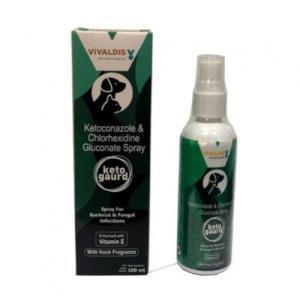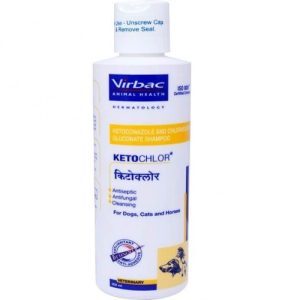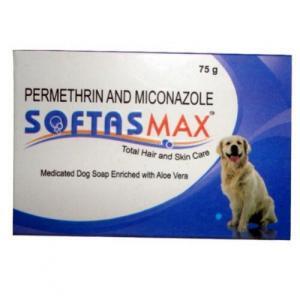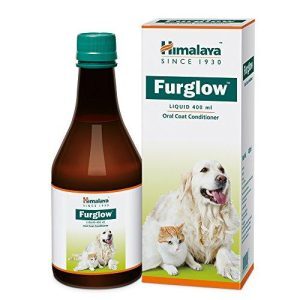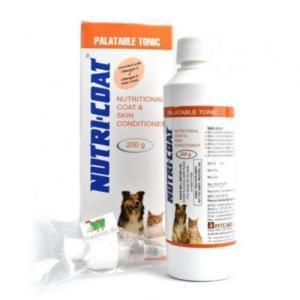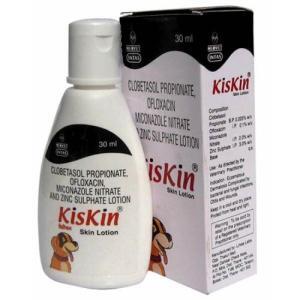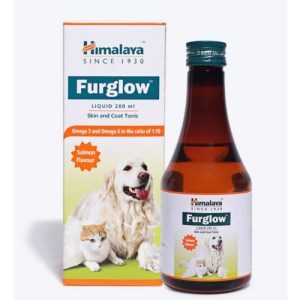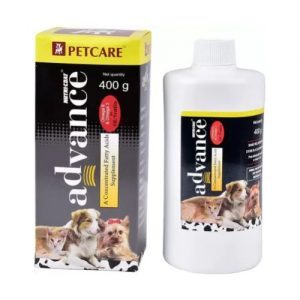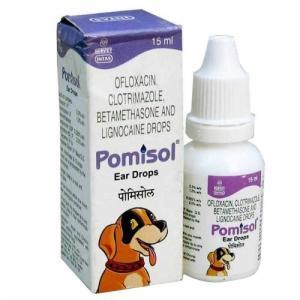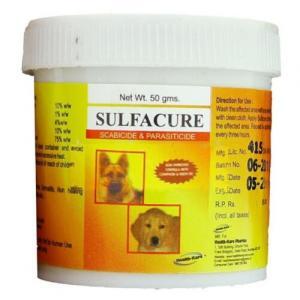Table of Contents
Various types of fungi cause fungal infections in cats and dogs and can affect the skin, ears, nails, and other parts of their bodies. These infections can cause discomfort, pain, and irritation to the animals. If left untreated, fungal infections can spread, worsen, and potentially lead to more serious health issues. Additionally, some fungal infections are zoonotic, meaning they can be transmitted from animals to humans, so treating them also helps prevent human infection.

What Are Fungal Infections?
Common fungal pet infections include ringworm (dermatophytosis), Malassezia dermatitis, and candidiasis. These infections can cause itchiness, redness, hair loss, skin lesions, ear discharge, and animal discomfort. Prompt diagnosis and antifungal treatments for dogs and cats by a veterinarian are important to alleviate the symptoms, prevent the spread of infection, and ensure the well-being of the affected pets.
Diagnosing fungal infections in pets often involves physical examination, skin scrapings, fungal cultures, or microscopic examination of hair or skin samples. Treatment typically involves anti-fungal pills, and solutions, which can be administered orally, topically, or through antifungal injection for dogs and cats, depending on the severity and location of the infection. In some cases, additional measures such as regular bathing, ear cleaning, and environmental decontamination may be necessary to eradicate the fungi and prevent re-infection.
Consult a veterinarian if you suspect your pet has a fungal infection. Proper diagnosis and timely treatment are essential for relieving the pet’s discomfort, preventing the spread of infection, and promoting a swift recovery.
Types of Fungal Infections in Pets
Common types of fungal infections in pets include ringworm, Malassezia dermatitis, and candidiasis. Besides, there are several others.
Aspergillosis
Aspergillosis is a fungal infection that can affect pets, including cats and dogs. There are two main types of aspergillosis.
Nasal Aspergillosis
This form of aspergillosis primarily affects the nasal passages and sinuses of animals. It is caused by the inhalation of spores from the Aspergillus fungus. Nasal aspergillosis can lead to symptoms such as sneezing, nasal discharge, bleeding, facial swelling, and difficulty breathing. It is more commonly seen in dogs than in cats.
Disseminated Aspergillosis
Disseminated aspergillosis occurs when the fungal infection spreads beyond the respiratory system and affects other organs or parts of the body. This type of aspergillosis is more severe and can be life-threatening. It can affect multiple organs, including the lungs, liver, kidneys, brain, and bones. Animals with weakened immune systems or underlying health conditions are more susceptible to disseminated aspergillosis.
Both forms of aspergillosis require veterinary diagnosis and anti-fungal remedies for dogs and cats. Treatment typically involves a combination of antifungal medications, surgical intervention in some cases, and supportive care to address the associated symptoms and complications.
Cryptococcosis
Cryptococcosis is a fungal infection caused by the Cryptococcus fungus, specifically Cryptococcus neoformans and Cryptococcus gattii. It is an opportunistic infection that primarily affects the respiratory system but can also involve other organs, such as the central nervous system (CNS). Cryptococcus is found in the environment, particularly in soil contaminated with bird droppings.
Cryptococcosis usually occurs due to the inhalation of fungal spores in pets, including cats and dogs. The infection can be localized, affecting the nasal passages, sinuses, and eyes, or it can become systemic, spreading to other body parts, such as the lungs, skin, lymph nodes, and CNS.
Symptoms of Cryptococcosis in pets may include nasal discharge, sneezing, coughing, respiratory difficulty, eye problems (such as inflammation or ulceration), skin lesions (typically on the head or limbs), neurological signs (such as changes in behavior or coordination), weight loss, and general malaise. CNS involvement can lead to more severe neurological symptoms.
Diagnosing Cryptococcosis in pets often involves a combination of physical examination, laboratory tests (such as fungal cultures and antigen testing), radiography, and possibly biopsies or cytology. Treatment typically consists of long-term antifungal therapy, medications such as fluconazole or itraconazole, and supportive care and management of any complications. In some cases, surgical removal of localized lesions may be necessary.
Cryptococcosis can be challenging to treat, and the duration of treatment may extend over several months. It is essential to involve a veterinarian for proper diagnosis, treatment, and infection monitoring. Additionally, precautions should be taken to minimize exposure to the fungus in the environment, as Cryptococcus can be zoonotic, meaning it can potentially be transmitted from animals to humans.
Blastomycosis
Blastomycosis is a fungal infection caused by the fungus Blastomyces dermatitidis. It primarily affects dogs but can also occur in other animals, including cats and humans. Blastomyces dermatitidis is commonly found in the soil, particularly in regions with moist environments such as river valleys and wooded areas.
Pets usually contract blastomycosis by inhaling fungal spores present in the environment. The spores can enter the lungs and cause an infection that can spread to other organs, including the skin, eyes, bones, and internal organs.
The symptoms of blastomycosis can vary depending on the organs affected, but they often include respiratory signs such as coughing, difficulty breathing, and fever. Other common symptoms include weight loss, loss of appetite, lethargy, skin lesions (often with draining discharge), lameness, eye problems, and enlarged lymph nodes.
Diagnosing blastomycosis typically involves a combination of physical examination, chest radiography, laboratory tests (such as fungal cultures and antigen testing), and possibly biopsies. Prompt and accurate diagnosis is crucial for initiating appropriate treatment.
Treatment of blastomycosis generally involves long-term anti-fungal therapy, often with medications such as itraconazole or fluconazole. The duration of treatment can extend over several months, and close monitoring of the pet’s response to treatment is essential.
Blastomycosis is not contagious from animal to animal or from animal to human. However, humans can also contract blastomycosis by inhaling the fungal spores from the environment. Therefore, it is important to handle infected pets with caution, especially if they have open skin lesions, and to take precautions to prevent exposure to the fungus.
If you suspect your pet may have blastomycosis, it is crucial to seek veterinary care promptly for proper diagnosis and treatment. Early detection and intervention can greatly improve the prognosis for pets with this fungal infection.
Localized Skin Fungal Infections in Pets
Localized skin fungal infections in pets can manifest in various forms. Here are three common examples:
Ringworm
Ringworm, or dermatophytosis, is a fungal skin, hair, and sometimes nail infection. Despite its name, it is not caused by a worm but by different fungi called dermatophytes. Ringworm typically appears as circular patches of hair loss, redness, scaling, and itchiness. It can affect both cats and dogs and can also be transmitted to humans.
Fungal Dermatitis
Fungal dermatitis refers to generalized inflammation and infection of the skin caused by fungi. Various types of fungi, including Malassezia and Candida, can contribute to this condition. Fungal dermatitis can result in redness, itching, hair loss, greasy or flaky skin, and an unpleasant odor. It commonly affects areas with skin folds, such as the armpits, groin, and facial folds, but can also occur on other body parts.
Yeast Infections
Yeast infections, often caused by Malassezia yeast, are common in pets, particularly in their ears and skin folds. These infections thrive in warm and moist environments. Yeast overgrowth can lead to redness, itchiness, greasiness, odor, and sometimes discharge. Dogs with floppy ears or allergies are particularly prone to ear yeast infections.
Localized skin fungal infections in pets can cause discomfort, irritation, and potential secondary infections if left untreated. Diagnosis usually involves a combination of physical examination, microscopic evaluation of skin samples, and sometimes fungal cultures. Treatment typically involves anti-fungal medications, antifungal meds for dogs’ yeast infections, and fungal pads for dogs’ faces, which can be administered topically, orally, or both, depending on the severity and location of the infection. Additionally, managing underlying conditions, such as allergies or hormonal imbalances, can help prevent recurrent fungal infections in pets.
How to Help Your Pet with Fungal Infections
To help your pet with fungal infections, seeking veterinary care for proper diagnosis and treatment is crucial, which may involve anti-fungal medication, topical treatments, antifungal herbs for dogs and cats, top anti-fungal foods, antifungal medicine for dogs’ ears, and supportive care. Additionally, maintaining good hygiene, keeping the affected areas clean and dry, and following the veterinarian’s instructions can aid in the recovery process.
Keto Guard Spray for Cats and Dogs (Ketoconazole, Chlorhexidine Gluconate), 1%/2%, 100ml
Keto Guard Spray is a holistic anti-fungal topical medication for cats and dogs to treat fungal and bacterial skin infections. It contains two active ingredients: ketoconazole and chlorhexidine gluconate.
Active Ingredients
Ketoconazole is an antifungal medication that works by inhibiting the growth of fungi, including dermatophytes and yeast. It is effective against fungal infections, such as ringworm and Malassezia dermatitis. Chlorhexidine gluconate is an antimicrobial agent that helps to control bacterial infections commonly associated with skin problems.
How to Use
The antifungal spray for dogs’ fungal infections is applied directly to the affected areas of the pet’s skin. Follow the veterinarian’s instructions and guidelines provided with the product for proper application. Generally, the affected areas should be clean and dry before applying the antifungal spray for dogs’ feet. The spray bottle allows for convenient and targeted application.
The frequency of use and duration of treatment will depend on the specific condition and severity of the infection. The antifungal, antibacterial spray for dogs and cats may be applied once or twice daily or as the veterinarian directs.
Benefits of Using Keto Guard Spray
- Treatment of Fungal Infections: Ketoconazole, one of the active ingredients, effectively combats fungal infections such as ringworm. It helps eliminate and control fungi growth on the skin, promoting healing.
- Control of Bacterial Infections: Chlorhexidine gluconate in the spray helps to combat and prevent bacterial infections commonly associated with skin issues. It has broad-spectrum antimicrobial properties that target a range of bacteria.
- Convenience and Targeted Application: The antifungal formula for dogs allows for easy and precise application to the affected areas, ensuring thorough coverage and penetration of the medication.
- Supportive Treatment: Keto Guard Spray can relieve pets suffering from symptoms associated with fungal and bacterial skin infections, such as itchiness, inflammation, redness, and irritation.
Ketochlor Medicated Shampoo for Cats and Dogs (Ketoconazole, Chlorohexidine Gluconate), 200ml
Ketochlor Medicated Shampoo is a specialized shampoo designed for cats and dogs to treat various skin conditions, including fungal and bacterial infections.
Active Ingredients
Ketoconazole is an antifungal medication that targets and eliminates fungal infections, such as ringworm and Malassezia dermatitis. It works by inhibiting the growth of fungi and preventing their reproduction. Chlorhexidine gluconate is an antimicrobial agent effective against a wide range of bacteria. It helps control bacterial infections often associated with skin problems.
How to Use
The antifungal yeast shampoo for dogs and cats should be used when pets have skin conditions that require antifungal and antibacterial treatment. It is particularly beneficial for pets with fungal infections, allergies, seborrheic dermatitis, or other skin conditions where fungal or bacterial overgrowth is present.
Wet your pet’s coat thoroughly with warm water to use Ketochlor Medicated antifungal, antibacterial shampoo for dogs and cats. Apply an adequate amount of shampoo onto the coat and massage it gently to create a rich lather. Pay attention to the affected areas or areas prone to infection. Allow the shampoo to remain on the coat for 5 to 10 minutes to allow the active ingredients to work. Then, rinse the shampoo thoroughly from the coat with clean water.
The frequency of use and duration of treatment will depend on the specific condition and severity of the infection. Generally, the best antifungal antiitch shampoo for dogs and cats may initially be used 2-3 times per week for acute cases. Then the frequency can be reduced to once weekly or as the veterinarian recommends for maintenance or prevention.
The Benefits of Using Ketochlor Medicated Shampoo
- Effective Antifungal and Antibacterial Treatment: The combination of ketoconazole and chlorhexidine gluconate provides a potent treatment for fungal and bacterial skin infections. It helps eliminate and control the growth of fungi and bacteria, promoting healing and reducing symptoms.
- Relief from Skin Conditions: Ketochlor Medicated antifungal shampoo for dogs and cats can relieve pets suffering from itchiness, inflammation, redness, odor, and other symptoms associated with fungal and bacterial skin infections. It helps soothe and calm irritated skin.
- Convenient and Easy to Use: The refresh antifungal shampoo for dogs and cats formulation allows for convenient application during bathing, ensuring thorough coverage of the affected areas. It can be used in combination with other treatments prescribed by the veterinarian.
- Maintenance and Prevention: Ketochlor Medicated Shampoo can be used for routine maintenance or prevention in pets prone to recurring fungal or bacterial skin infections.
Softas Max Soap for Dogs (Aloe Vera), 75g
Softas Max Soap for Dogs is an antifungal wash for dogs. It is a specialized soap formulated for dogs, containing Aloe Vera as its active ingredient. Softas Max Soap is designed for regular bathing and cleaning of dogs. It is beneficial for maintaining a clean and healthy coat and skin. The antifungal soap for dogs and cats helps remove dirt, debris, and unpleasant odors from your dog’s fur, leaving it fresh and smelling pleasant.
Active Ingredient
Aloe Vera is a natural plant extract known for its soothing and moisturizing properties. It has various benefits for the skin and coat, including moisturizing dry skin, soothing irritations, and promoting a healthy, glossy coat. Aloe Vera can also relieve itching and inflammation, making it suitable for dogs with sensitive or irritated skin.
How to Use
Wet your dog’s coat with warm water. Rub the Softas Max Soap gently onto the wet coat to create a lather. Ensure the soap is applied to all areas, including the body, legs, and tail while avoiding the eyes and ears. Massage the soap into the coat for a few minutes, allowing the skin to absorb the beneficial properties of Aloe Vera. Rinse the coat thoroughly with clean water to remove all soap residues. After rinsing, dry your dog’s coat with a towel or air-dry it.
The frequency of using Softas Max Soap will depend on your dog’s individual needs and the recommendations of your veterinarian or groomer. Bathing your dog once every few weeks or as needed is sufficient to keep them clean and maintain healthy skin and coat. However, excessive bathing can strip the skin of natural oils, so finding a balance that suits your dog’s specific requirements is essential.
Benefits
- Gentle and Soothing: Softas Max Soap with Aloe Vera is gentle on the dog’s skin, making it suitable for dogs with sensitive or irritated skin. Aloe Vera helps soothe and calm the skin, relieving itching and inflammation.
- Moisturizing and Hydrating: Aloe Vera’s moisturizing properties help combat dryness and maintain healthy skin and coat. It can help prevent dry, flaky skin and promote a soft and lustrous coat.
- Cleansing and Deodorizing: The soap effectively cleanses the coat, removing dirt, debris, and unpleasant odors, leaving the dog’s fur fresh and clean.
- Natural Ingredient: Aloe Vera is a natural plant extract known for its beneficial properties, making Softas Max Soap a gentle and safe option for bathing your dog.
Furglow Oral Coat Conditioner for Cats and Dogs (Vitamin A, Vitamin E, Selenium, Zinc), 200ml
Furglow Oral Coat Conditioner supports and enhances the health and appearance of the coat and skin in cats and dogs. It is particularly beneficial for pets with dry, dull, or damaged coats and those experiencing shedding, itching, or skin irritations. Antifungal supplements for dogs and cats provide essential nutrients that nourish the skin and coat from within, resulting in a healthier and more lustrous appearance.
Active Ingredients
- Vitamin A plays a vital role in promoting healthy skin and coat. It supports the regeneration of skin cells, aids in maintaining proper moisture levels, and contributes to a glossy and vibrant coat.
- Vitamin E is a potent antioxidant that helps protect the skin and coat cells from damage caused by free radicals. It assists in maintaining skin health, reduces inflammation, and supports a healthy coat.
- Selenium is a trace mineral with antioxidant properties that helps protect the skin cells from oxidative stress. It plays a role in maintaining skin elasticity and overall skin health.
- Zinc is an essential mineral that supports various skin functions. It aids in maintaining healthy skin and coat, supports wound healing, and helps regulate oil production on the skin, contributing to a balanced and healthy coat.
How to Use
Furglow Oral Coat Conditioner comes in a liquid form and is typically administered orally. The exact dosage and administration instructions may vary based on the size and weight of your pet. The supplement can be mixed with antifungal foods for dogs and cats or given directly into their mouth using a dropper or syringe. Ensuring that the recommended dosage is provided consistently to achieve the desired results is important. The frequency of using Furglow Oral Coat Conditioner will depend on your pet’s individual needs and the recommendations of your veterinarian. Typically, the supplement is administered daily for an initial period and then continued on a maintenance basis. Following the recommended dosage and frequency is essential for optimal benefits for your pet’s coat and skin health.
Benefits
- Promotes a Healthy Coat: The combination of Vitamin A, Vitamin E, Selenium, and Zinc supports the health and appearance of your pet’s coat. It can help improve coat texture, reduce shedding, and enhance shine and vibrancy.
- Supports Skin Health: The supplement nourishes the skin from within, helping to maintain moisture levels, reduce dryness and itching, and support overall skin health.
- Antioxidant Protection: Vitamin E and Selenium provide antioxidant protection, helping to neutralize free radicals and protect the skin and coat cells from oxidative damage.
- Overall Well-being: Healthy skin and coat contribute to your pet’s well-being. Furglow Oral Coat Conditioner helps ensure your pet’s coat remains in optimal condition, promoting comfort and happiness.
Nutri-Coat Conditioner for Cats and Dogs (Fatty Acids, Vitamins, Zinc, Selenium, Lecitin), 200g
Nutri-Coat Conditioner is a natural antifungal for dogs and cats. It is a specialized pet supplement to promote a healthy coat and skin. It is particularly beneficial for pets with dry, dull, or damaged coats and those experiencing shedding, itching, or skin irritations. The supplement provides essential nutrients that nourish the skin and coat from within, promoting a healthy, shiny, and vibrant appearance.
Active Ingredients
- Fatty acids, such as Omega-3 and Omega-6 fatty acids, are crucial in maintaining skin and coat health. They contribute to the integrity of the skin barrier, help retain moisture, reduce inflammation, and support a healthy and lustrous coat.
- The supplement contains various vitamins essential for skin and coat health. These vitamins, including Vitamin A, Vitamin E, and other B vitamins, provide antioxidant support, promote skin cell regeneration, and contribute to a healthy coat.
- Zinc is an essential mineral that supports various skin functions. It plays a role in maintaining healthy skin, supporting wound healing, regulating oil production, and promoting a balanced and healthy coat.
- Selenium is a trace mineral with antioxidant properties that helps protect the skin cells from oxidative stress. It supports overall skin health and contributes to a healthy coat.
- Lecithin is a natural soybean compound that provides fatty acids and phospholipids. It helps to maintain skin moisture, supports skin barrier function, and aids in the absorption of fat-soluble vitamins.
How to Use
Nutri-Coat Conditioner typically comes in a liquid form that can be mixed with your pet’s food. The exact dosage and administration instructions may vary based on the size and weight of your pet. Typically, the supplement is administered daily for an initial period and then continued on a maintenance basis. Following the recommended dosage and frequency is essential for optimal benefits for your pet’s coat and skin health.
Benefits
- Promotes a Healthy Coat and Skin: The combination of Fatty Acids, Vitamins, Zinc, Selenium, and Lecithin supports the health and appearance of your pet’s coat and skin. It helps improve coat texture, reduce shedding, moisturize dry skin, and support overall health.
- Enhances Shine and Vibrancy: The supplement provides essential nutrients for a shiny and vibrant coat. It helps maintain coat color, reduce dullness, and improve overall coat appearance.
- Supports Skin Barrier Function: The presence of fatty acids and lecithin helps maintain the integrity of the skin barrier, reducing moisture loss and protecting the skin from external irritants.
- Antioxidant Protection: The inclusion of vitamins, zinc, and selenium provides antioxidant support, helping to neutralize free radicals and protect the skin and coat cells from oxidative damage.
- Overall Well-being: A healthy coat and skin contribute to your pet’s well-being and comfort. Nutri-Coat Conditioner helps ensure your pet’s coat remains in optimal condition, promoting their overall health and happiness.
Kiskin Lotion for Dogs (Clobetasol, Ofloxacin, Miconazole, Zinc), 100ml
Kiskin lotion is specifically formulated to treat yeast and skin fungal infections in dogs effectively. It acts as an antifungal agent by targeting and weakening the fungi’s cell membrane, ultimately eliminating sensitive fungal organisms.
Active Ingredients
- Clobetasol is a potent corticosteroid medication that belongs to the class of glucocorticoids. It has anti-inflammatory and immunosuppressive properties, effectively reducing inflammation, itching, and redness associated with various skin conditions. Clobetasol is commonly used to treat dermatological conditions such as eczema, psoriasis, and allergic reactions.
- Ofloxacin is a broad-spectrum antibiotic from the fluoroquinolone class. It works by inhibiting the growth and replication of bacteria. It is commonly used to treat bacterial infections, including skin and soft tissue infections. Ofloxacin is effective against a wide range of gram-positive and gram-negative bacteria.
- Miconazole is an antifungal medication in the class of drugs known as azole antifungals. It works by inhibiting the growth of fungi and preventing the synthesis of ergosterol, an essential component of fungal cell membranes. Miconazole is commonly used to treat various fungal infections, including those caused by dermatophytes, yeast, and other fungal species.
- Zinc is an essential mineral that plays a crucial role in numerous physiological processes. In the context of skin health, zinc contributes to wound healing, supports the immune system, and helps regulate oil production in the skin. Zinc also possesses mild antimicrobial properties and can aid in controlling bacterial and fungal growth on the skin.
How to Use
Use it as directed by your veterinarian.
Benefits
- Anti-Inflammatory Action: Clobetasol, a potent corticosteroid, helps reduce inflammation, redness, and itching commonly associated with skin conditions such as allergies, dermatitis, or eczema. Its anti-inflammatory properties can provide relief and promote comfort for pets.
- Broad-Spectrum Antibacterial Activity: Ofloxacin, a broad-spectrum antibiotic, is effective against many bacteria. Incorporating it into the lotion can help address or prevent bacterial infections that may occur concurrently with skin issues. This can aid in controlling bacterial growth and promoting a healthier skin environment.
- Antifungal Effect: Miconazole, an antifungal medication, targets and inhibits the growth of fungi. By combating fungal infections, including dermatophytes and yeast, miconazole helps alleviate symptoms such as itching, redness, and discomfort.
- Skin Protection and Health: Zinc, an essential mineral, supports various aspects of skin health. It helps regulate oil production, maintains skin integrity, and supports wound healing. Zinc also possesses mild antimicrobial properties, aiding in controlling the growth of bacteria and fungi on the skin.
- Comprehensive Treatment Approach: By combining these active ingredients, a lotion can provide a multi-faceted approach to managing certain skin conditions. It simultaneously addresses inflammation, bacterial infections, and fungal overgrowth, promoting overall skin health and relieving associated symptoms.
Furglow Skin And Coat Tonic for Cats and Dogs (Minerals, Vitamin A, Vitamin E, Selenium, Zinc), 200ml
Furglow Skin and Coat Tonic is a specialized supplement for cats and dogs to promote healthy skin and coat. It is particularly beneficial for pets with dry, dull, or damaged coats and those experiencing shedding, itching, or skin irritations. The tonic provides essential nutrients that nourish the skin and coat from within, promoting a healthy, shiny, and lustrous appearance.
Active Ingredients
- The tonic includes essential minerals contributing to overall skin health and function. These minerals, which may include copper, iron, manganese, and others, are necessary for various physiological processes, including the production of healthy skin cells, collagen synthesis, and antioxidant defense.
- Vitamin A is essential for skin health and maintaining skin integrity. It supports the regeneration of skin cells, promotes a healthy skin barrier, and contributes to a smooth and supple coat.
- Vitamin E is a powerful antioxidant that helps protect the skin and coat cells from oxidative damage caused by free radicals. It supports skin health, reduces inflammation, and produces a healthy and lustrous coat.
- Selenium is a trace mineral that acts as an antioxidant and supports the overall health of the skin and coat. It helps protect the skin cells from oxidative stress and promotes healthy skin function.
- Zinc is an essential mineral in maintaining healthy skin and coat. It aids in wound healing, supports immune function, regulates oil production on the skin, and promotes a balanced and healthy coat.
How to Use
Furglow Skin and Coat Tonic typically comes in liquid form and is administered orally. The exact dosage and administration instructions may vary based on the size and weight of your pet. The tonic can be mixed with your pet’s food or given directly into their mouth using a dropper or syringe. Ensuring that the recommended dosage is provided consistently to achieve the desired results is important. Typically, the tonic is administered daily for an initial period and then continued on a maintenance basis.
Benefits
- Promotes a Healthy Skin and Coat: The combination of minerals, Vitamin A, Vitamin E, Selenium, and zinc supports the health and appearance of your pet’s skin and coat. It helps improve coat texture, reduce shedding, and enhance shine and vibrancy.
- Supports Skin Health and Function: The tonic provides essential nutrients necessary for maintaining healthy skin. It supports the regeneration of skin cells, promotes a healthy skin barrier, and contributes to overall skin function.
- Antioxidant Protection: Including Vitamin E and Selenium provides antioxidant support, helping neutralize free radicals and protect the skin and coat cells from oxidative damage.
- Overall Well-being: A healthy skin and coat contribute to your pet’s overall well-being and comfort. Furglow Skin and Coat Tonic helps ensure that your pet’s skin and coat remain in optimal condition, promoting their overall health and happiness.
Nutri-Coat Advance Supplement for Cats and Dogs (Omega 3, Omega 6), 200g, 400g
Nutri-Coat Advance Supplement is a specialized nutritional supplement formulated for cats and dogs. It is particularly beneficial for pets with dry, dull, or damaged coats and those experiencing excessive shedding, itching, or skin irritations. The supplement provides essential fatty acids that nourish the skin and coat from within, promoting a healthy, shiny, and lustrous appearance.
Active Ingredients
- Omega-3 Fatty Acids: Omega-3 fatty acids, such as eicosapentaenoic acid (EPA) and docosahexaenoic acid (DHA), are polyunsaturated fats with numerous health benefits. They are known for their anti-inflammatory properties and are crucial in maintaining skin health. Omega-3 fatty acids can help reduce inflammation, relieve itching, support a healthy skin barrier, and contribute to a shiny coat.
- Omega-6 Fatty Acids: Omega-6 fatty acids, including linoleic acid and gamma-linolenic acid (GLA), are essential fatty acids necessary for proper cellular function and maintaining skin health. They help maintain the integrity of the skin barrier, promoting moisture retention and supporting a healthy coat.
How to Use
Nutri-Coat Advance Supplement typically comes in a liquid form that can be mixed with your pet’s food. The exact dosage and administration instructions may vary based on the size and weight of your pet. Typically, the supplement is administered daily as a long-term supplement to support ongoing skin and coat health.
Benefits
- Promotes a Healthy Skin and Coat: Omega-3 and Omega-6 fatty acids are essential for maintaining the health and condition of the skin and coat. They support a healthy skin barrier, help reduce inflammation, relieve itching, and contribute to a shiny and lustrous coat.
- Anti-Inflammatory Properties: The presence of Omega-3 fatty acids in the supplement provides anti-inflammatory benefits. They can help reduce skin inflammation associated with allergies, dermatitis, or other skin conditions, promoting comfort for your pet.
- Moisturizes and Nourishes the Skin: Combining Omega-3 and Omega-6 fatty acids helps maintain proper skin hydration and moisture retention, preventing dryness and promoting a healthy skin environment.
- Overall Well-being: Healthy skin and coat contribute to your pet’s well-being and comfort. Nutri-Coat Advance Supplement helps ensure that your pet’s skin and coat remain optimal, promoting their overall health and happiness.
Pomisol Ear Drops for Dogs (Ofloxacin, Clotrimazole, Betamethasone, Lignocaine), 15ml
Pomisol Ear Drops are the best ear antifungal drops for dogs. It is a specialized medication designed for dogs to treat ear infections and inflammation in dogs. It is particularly beneficial for otitis externa, inflammation, or external ear canal infection. The drops provide a combination of medications that work synergistically to combat bacterial and fungal infections, reduce inflammation, and relieve pain and itching.
Active Ingredients
- Ofloxacin is a broad-spectrum antibiotic from the fluoroquinolone class. It works by inhibiting the growth and replication of bacteria. Pomisol Ear Drops help treat and prevent bacterial infections that may be present in the dog’s ear.
- Clotrimazole is an antifungal medication that belongs to the azole class of drugs. It helps combat fungal infections by inhibiting the growth and reproduction of fungi. In Pomisol Ear Drops, clotrimazole addresses fungal infections that may contribute to dog ear-related issues.
- Betamethasone is a corticosteroid with potent anti-inflammatory and immunosuppressive properties. It helps reduce inflammation, itching, and discomfort associated with ear conditions. Betamethasone provides relief and promotes the healing process in the affected ear.
- Lignocaine is a local anesthetic that provides temporary relief from pain and discomfort. It helps to numb the affected area, alleviating pain and reducing the urge to scratch or shake the ears.
How to Use
Pomisol Ear Drops should be administered directly into the dog’s affected ear(s). The best antifungal ear flush for dogs is typically instilled into the ear canal by gently pulling the ear flap upward and outward to straighten the ear canal. The recommended number of drops per ear and the frequency of administration may vary depending on the specific condition and the veterinarian’s instructions. After instilling the drops, massaging the base of the ear to help distribute the medication is often recommended.
Handling the dog’s ears gently during the application is essential to avoid causing discomfort or injury. It is advisable to clean the ears before administering the drops if excessive debris or discharge is present. The veterinarian may provide specific instructions on cleaning the ears if necessary.
Typically, the drops are administered once or twice daily for a specified period, which may range from a few days to several weeks, depending on the response to treatment.
Benefits
- Antibacterial and Antifungal Treatment: The combination of Ofloxacin and Clotrimazole in Pomisol Ear Drops addresses bacterial and fungal infections commonly associated with ear conditions in dogs. It helps eliminate and control the growth of bacteria and fungi in the affected ears.
- Anti-Inflammatory Action: Betamethasone provides anti-inflammatory benefits, reducing inflammation, redness, and swelling in the ear canal. It helps alleviate discomfort and promotes the healing process.
- Pain Relief: Lignocaine acts as a local anesthetic, temporarily relieving pain and discomfort associated with ear conditions. It helps alleviate pain and reduces the urge to scratch or shake the ears.
- Targeted Treatment: Pomisol Ear Drops offer a targeted treatment approach, delivering medications directly to the affected area for maximum effectiveness.
Sulfacure Ointment for Dogs (Sulphur, Camphor, Neem, Minerals), 50g
Sulfacure Ointment is antifungal cream safe for dogs. It is a specialized medication for dogs used to treat various skin conditions in dogs. It is particularly beneficial for managing skin irritations, itching, inflammation, and minor skin infections. The antifungal, antibacterial cream for dogs combines active ingredients that work synergistically to alleviate symptoms and promote healing.
Active Ingredients
- Sulphur has long been used in veterinary medicine for its antipruritic (anti-itching) and antiparasitic properties. It helps relieve itching, control mites and fleas, and manage various skin conditions, including mange and dermatitis.
- Camphor has analgesic and antipruritic properties, providing relief from pain and itching. It can soothe irritated skin and help reduce discomfort caused by skin conditions.
- Neem is a natural plant extract known for its antimicrobial, anti-inflammatory, and antipruritic properties. It can help combat bacterial and fungal infections, reduce inflammation, and alleviate itching in dogs with various skin issues.
- The specific minerals present in the ointment may vary based on the formulation. Minerals play a crucial role in maintaining overall skin health and function. They support cellular processes, aid wound healing, and promote a healthy skin barrier.
How to Use
Sulfacure Ointment is typically applied topically to the affected areas of the dog’s skin. Before applying the ointment, cleaning and drying the affected area is generally recommended. Take some ointment and gently massage it onto the affected skin, ensuring even coverage. Avoid applying the ointment near the eyes, mouth, or open wounds. It is typically used once or twice daily. Still, the exact frequency and duration of treatment will depend on the severity of the skin condition and the individual dog’s response to the ointment.
Benefits
- Relieves Itching and Discomfort: Combining active ingredients in Sulfacure Ointment, such as sulphur, camphor, and neem, helps alleviate itching and discomfort associated with various skin conditions, relieving the affected dog.
- Supports Skin Healing: The ointment’s active ingredients, along with the minerals present, can aid in supporting the healing process of minor skin irritations and infections, contributing to overall skin health.
- Antimicrobial Properties: Neem and sulphur possess antimicrobial properties, which can help combat bacterial and fungal infections commonly associated with skin issues in dogs.
- Soothes and Calms the Skin: Camphor and neem have soothing properties that help calm irritated skin and reduce inflammation, promoting a more comfortable state for the dog.
It is important to consult a veterinarian before using the mentioned medications for your pet. They will assess the specific skin condition, provide an accurate diagnosis, and offer appropriate guidance on the dosage, frequency, and duration of treatment. Following the veterinarian’s instructions will help ensure the best outcome for your dog’s skin health.
FAQ
What Is a Good Antifungal Cream for Cats and Dogs?
Can I use antifungal cream for dogs and cats? A good antifungal cream for cats and dogs is one that is specifically formulated for their use and contains effective active ingredients for treating fungal infections. Some commonly recommended antifungal creams for pets include those containing ingredients like miconazole, clotrimazole, or ketoconazole. However, it is crucial to consult a veterinarian who can recommend the most suitable and effective antifungal cream based on your pet’s specific condition.
Can You Use Over the Counter Antifungal for a Dog’s Yeast Overgrowth in Their Ear?
Using over-the-counter antifungal meds for dogs and cats is advisable with consulting a veterinarian first. While some over-the-counter antifungal products may be safe for pets, it is crucial to have a proper diagnosis and appropriate treatment plan from a veterinarian. They can determine the underlying cause of the ear issue and recommend the most suitable and effective treatment, which may include prescription-strength antifungal medications.
How to Tell if Your Pet Has a Fungal Ear Infection?
Common signs of a fungal ear infection in pets may include:
- frequent scratching or rubbing of the ears;
- redness and swelling of the ear canal;
- discharge from the ears, which may be dark, thick, or have a foul odor;
- excessive shaking of the head or tilting of the head to one side;
- sensitivity or pain when the ears are touched;
- loss of balance or coordination (in severe cases).
If you suspect your pet has a fungal ear infection, seeking veterinary attention for a proper diagnosis and appropriate treatment is important.
How Do I Know If My Pet’s Ear Infection is Fungal or Bacterial?
Determining whether a pet’s ear infection is fungal or bacterial requires a proper examination and diagnostic testing by a veterinarian. They may perform an ear swab or culture to identify the specific microorganism causing the infection. This helps determine whether fungi, bacteria, or a combination of both cause the infection. The veterinarian can recommend the most suitable treatment approach, including antifungal or antibacterial medications, based on the results.
What Causes Bacterial and Fungal Infections in Dogs and Cats?
Bacterial and fungal infections in dogs and cats can have various causes, including allergies (pets with allergies, such as food allergies or environmental allergies, may be more prone to skin and ear infections caused by bacteria or fungi); moisture and humidity (damp environments or excessive moisture in the ears or on the skin can create an environment conducive to the growth of bacteria or fungi); compromised immune system; trauma or injury; poor hygiene.


